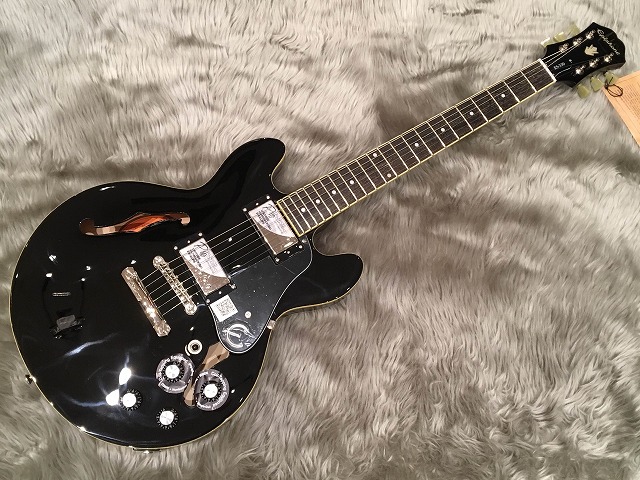Casino Vs Es 330
- Epiphone Elitist Casino Vs Gibson Es 330
- Casino Vs Es 335
- Elitist Casino Vs Es 330
- Epiphone Casino Vs Es 330
- Es 330 Vs Casino
| Gibson ES-330 | |
|---|---|
| Manufacturer | Gibson |
| Period | 1959 — present |
| Construction | |
| Body type | hollow |
| Neck joint | Set |
| Scale | 24.75' |
| Woods | |
| Body | maple (laminated) |
| Neck | mahogany on most models in most periods; sometimes maple |
| Fretboard | rosewood on most models, ebony on some |
| Hardware | |
| Bridge | Fixed |
| Pickup(s) | 1 or 2 P-90s |
| Colors available | |
| Vintage Sunburst, Cherry, Black, Natural | |
I'd like to own an ES-330 or nice Casino again although they're prone to feedback onstage. Have to be careful. I always liked the way Grant Green sounded playing one. In the old days, when Gibson made both the ES-330 and Casino in Kalamazoo, the pickups would have been interchangeable. Don't know about now. Emily Remler had humbuckers in her 330 and that makes it a different beast I think (love her tone too, btw!). Another frequent ES-330 user is New Mastersound's guitarist Eddie Robberts. I like his slightly rough and funky tone. I am curious about that 50th anniversary Casino, seems like a great deal for the money! Casino Vs Es 330, poker simulation analysis, poker rushden, la poste roulette marianne.
The Gibson ES-330 is a thinline hollow-body electric guitar model produced by the Gibson Guitar Corporation. It was first introduced in 1959.[1]
Though similar in appearance to the popular Gibson ES-335 guitar, the ES-330 is quite different: the 330 is a fully hollow thinline guitar, not a semi-hollow guitar with a center block. Also, the 330 has two single-coilP-90 pickups, in contrast with the two humbuckers on the 335.
The 330 neck originally joined the body at the 16th fret, not the 19th, like the 335.[2] In 1967/1968, Gibson changed it to join at the 19th fret. Current Gibson reissues are known at ES-330L to denote this longer ('L') feeling neck, and reissues of pre-68 330s have the 16th fret join as they would have originally. Note that the scale length of both models (16-fret and 19-fret) is the same, the body is just different (the 16-fret model has markedly taller upper bouts and thus more hollow body area).
The guitar has been produced both as a single-pickup instrument (ES-330T) and as a dual-pickup instrument (ES-330TD). Somewhat unusually, the ES-330T had its pickup mounted halfway between the bridge and the end of the neck, not in one of the usual neck or bridge positions. It has been available in sunburst, cherry, natural, walnut, and sparkling burgundy finishes. Tailpieces used are usually trapeze or Bigsby vibrato tailpieces. Due to its lack of popularity compared to the other Gibson thinline guitars (such as the ES-335, ES-345, and ES-355), the ES-330 was discontinued by Gibson in 1972. Since then, it has been reissued a few times by the Gibson Custom Shop division.
Another great product of the Ted McCarty era at Gibson, the Casino shares many common features with Gibson’s ES-330, including its dual “dog-ear” P-90 pickups (Epiphone also offered a less-desirable single-pickup Casino) and double-cutaway, fully hollow thinline body design.
Epiphone Elitist Casino Vs Gibson Es 330
Famous ES-330 players include Emily Remler, B.B. King, Slim Harpo, Grant Green, William Reid, Roky Erickson, Chris Bell, Zoot Horn Rollo, Brian Jones, Brad Simpson of The Vamps, Elliott Smith and Mafuyu Sato.
Casino Vs Es 335
It is notable that the ES-330 has a nearly identical cousin, the Epiphone Casino (Epiphone was and is a subsidiary of Gibson), which was played in particular by the Beatles’ John Lennon, George Harrison, and Paul McCartney, and The Rolling Stones’ Keith Richards.

References[edit]
Elitist Casino Vs Es 330
- ^'Guitar Review: Gibson Custom ES-330' by Tom Beaujour. Guitar Aficionado, April 17th, 2013[1]
- ^Duchossoir, A. R. (1981). Gibson Electrics. Mediapresse. p. 158. ISBN9780881882698.